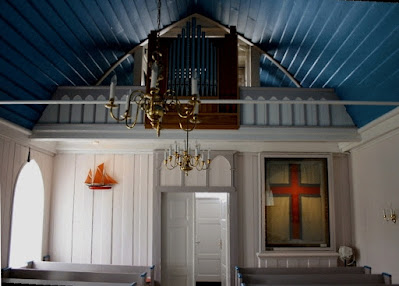
After the Viking era, as part of the Hanseatic League, Estonia has been occupied by Denmark, Sweden, Poland, Germany and lately Russia; permanently threatened, divided, fighting for independence, Estonia obtained it briefly between 1918 and 1940, then finally since 1988 - it's hard to believe how the country managed to keep its own language and national identity.
Being a small territory, Estonia is also hampered by geographic features - over 800 islands ! 1500 lakes! What terra firma, is most of Estonia just water ? On the other hand, those islands and lakes and forests around are the most precious nature of the country. The largest islands, Hiiumaa and Saaremaa, need to be interconnected between them and with mainland. In Winter, that part of the Baltic freezes into a large pack ice, thick enough to allow traffic; this route over the ice across the sea is called Jäätee :
"In wintertime roads appear over the frozen surface of seas, lakes and rivers in Estonia. On these freeways , there is nothing but whiteness as far as the horizon, perhaps a fringe of dark conifers in the rear-view mirror, and total silence. This makes for an eerie driving experience on the route that runs for 26 km from the port of Rohuküla on the mainland coast of Estonia across the Baltic Sea to the island of Hiiumaa. "
" Here, on Europe's longest jäätee, there are a few markings to follow. A car spins along in the track made by previous vehicles, passing an occasional traffic sign or guided by large juniper branches, 'planted' upright like trees growing magically from the snow to indicate the edges of the road ."
"During the journey, which can take at least an hour, the traveller watches the cinematic view play through the windscreen, and it might feel as if they are driving off the edge of the world. A good soundtrack is recommended."
" It is both a relief and a disappointment when Hiiumaa's coastline appears, a faint shadow in the far distance. The meditative skyline and the slim silver jäätee are soon replaced by salted tarmac and slushy roundabouts, and all the messy dockside infrastructure of tollgates and Portakabins, streetlamps and telegraph poles.
Ice roads are open only during the hours of daylight, and even then snow flurries may decrease visibility. The road is a shortcut, as the crow flies, but no one should rush it - or slip into a dawdling dream. Drivers must keep to speeds of between 25 km/h and 40 km/h - the lowest limit is important. No stopping is allowed. This is a precaution against changes in the car's rate of progress causing wave under the ice; if such a wave accumulates it can be strong enough to crack it. "( ...)
from Nancy Campbell, "Fifty Words for Snow"
Hiiumaa is a flat island, with nothing remarkable except a few old windmills of a type you seldom see elsewhere.
Kärdla is the main village, with a museum.
The old fire station, now tourist office.
Kärdla street in winter.
'Pikk Maja', the long house - a museum.
Finally a warm comfy place: the museum's cafeteria.
------------------------------------------
Inspired by:



-XL.jpg)








-XL.jpg)








.jpg)
-XL.jpg)

-XL.jpg)
























